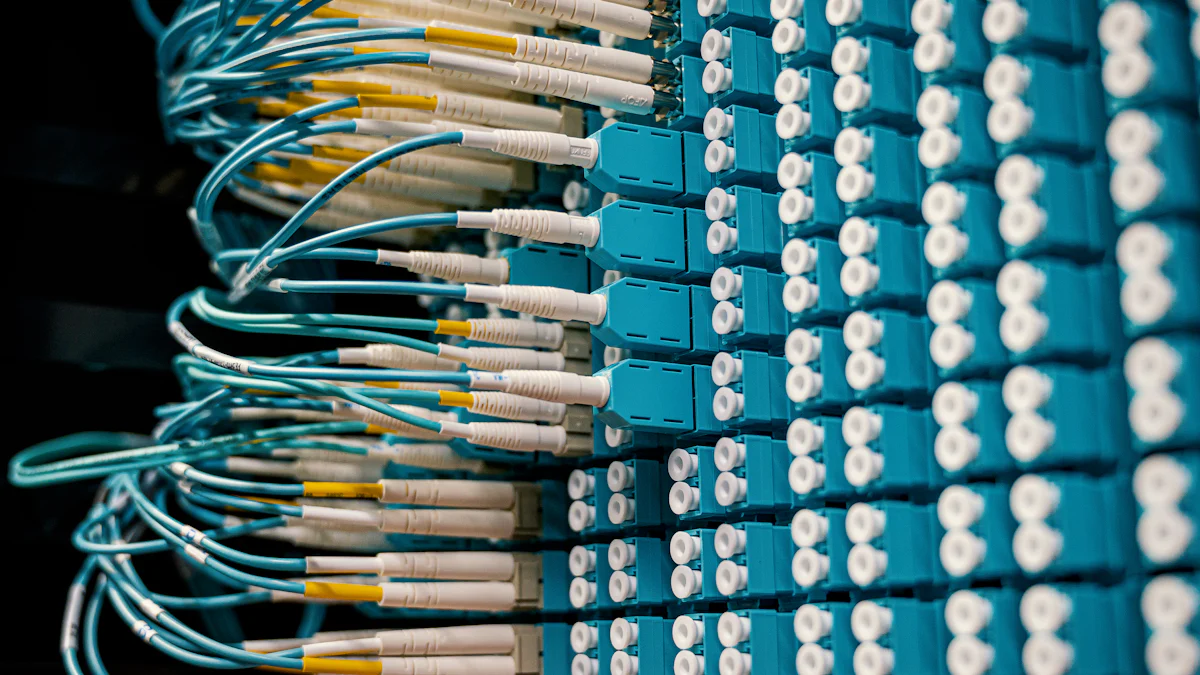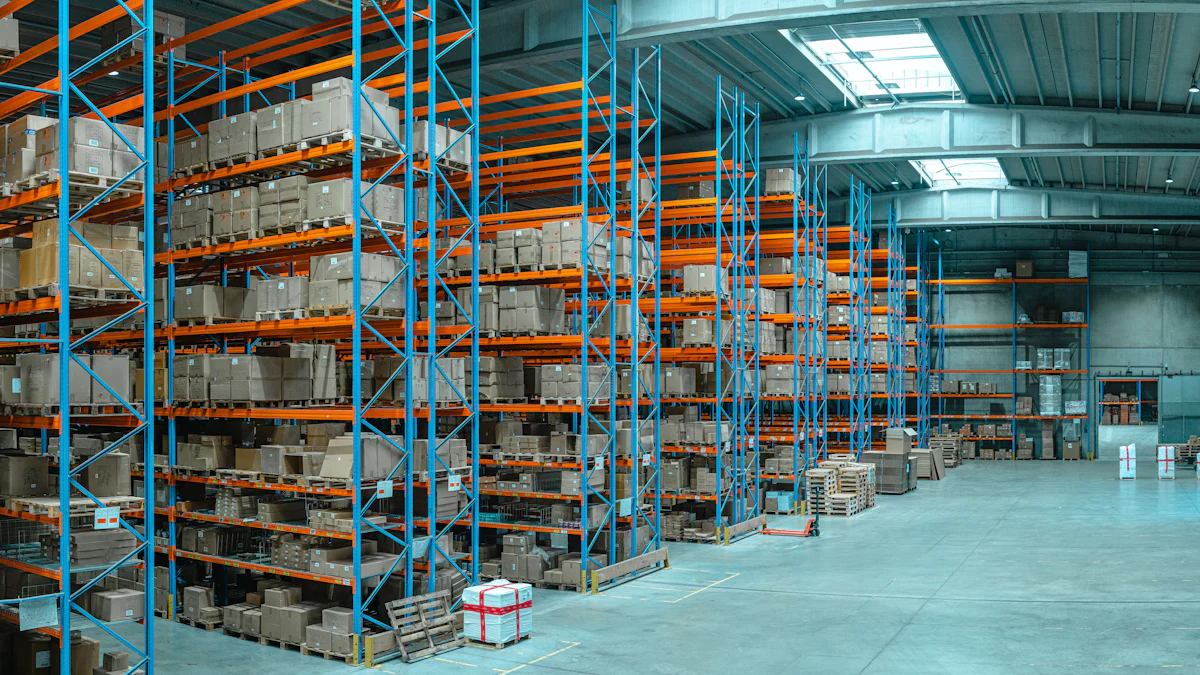How to Implement Technology in Your Supply Chain

Supply chains are the backbone of businesses, ensuring products reach customers seamlessly. Integrating technology supply chain has become imperative in today's fast-paced world. The utilization of advanced technologies like blockchain, artificial intelligence, and IoT revolutionizes supply chains, enhancing efficiency and visibility. This blog aims to delve into the significance of technology in modern supply chains, exploring its benefits and providing a roadmap for successful implementation.
Understanding the Need for Technology in Supply Chains
Supply chains face numerous challenges that hinder seamless operations. Inefficiencies and bottlenecks often disrupt the flow of goods, leading to delays and increased costs. The lack of visibility and transparency within supply chains makes it challenging to track products effectively, resulting in potential errors and customer dissatisfaction. Moreover, the high operational costs associated with manual processes and outdated systems can significantly impact a company's bottom line.
On the flip side, integrating technology into supply chains offers a myriad of benefits. Improved efficiency and productivity are key advantages that technology brings. By automating repetitive tasks and streamlining processes, companies can optimize their operations and achieve higher output levels. Additionally, enhanced visibility and tracking provided by technology enable real-time monitoring of inventory movements, ensuring accurate stock levels and timely deliveries. This heightened visibility also enhances decision-making processes, leading to more informed choices throughout the supply chain network. Furthermore, technology integration leads to substantial cost reduction and savings, as streamlined processes reduce waste, improve resource allocation, and ultimately drive down operational expenses.
Key Technologies Transforming Supply Chains

Internet of Things (IoT)
The Internet of Things (IoT) plays a pivotal role in modern supply chains, offering unparalleled connectivity and data insights. Through real-time tracking and monitoring, IoT devices enable companies to monitor their inventory movements continuously. This constant surveillance ensures that businesses have up-to-date information on the location and condition of their goods, leading to more informed decision-making processes.
Moreover, IoT facilitates predictive maintenance practices by analyzing equipment performance data in real time. By predicting potential failures before they occur, companies can proactively address maintenance issues, reducing downtime and optimizing operational efficiency.
Artificial Intelligence and Machine Learning
Artificial Intelligence (AI) and Machine Learning are revolutionizing supply chain management by enhancing forecasting accuracy and optimizing inventory levels. AI algorithms can analyze vast amounts of historical data to predict future demand patterns accurately. This capability enables companies to anticipate market trends, optimize production schedules, and ensure adequate stock availability.
Furthermore, AI-driven technologies facilitate inventory optimization by dynamically adjusting stock levels based on demand fluctuations. By automating inventory management processes, businesses can minimize excess stock holding costs while ensuring product availability when needed.
Blockchain Technology
Blockchain technology offers enhanced transparency and traceability throughout the supply chain network. By creating an immutable ledger of transactions, blockchain ensures that every step in the supply chain is recorded securely. This transparency not only reduces the risk of fraud but also enhances trust among stakeholders.
Additionally, blockchain technology enables secure and immutable transactions by encrypting data exchanges between parties. The decentralized nature of blockchain eliminates the need for intermediaries, streamlining transaction processes and reducing associated costs.
Robotics and Automation
In the realm of supply chain management, robotics and automation are revolutionizing traditional practices. These advanced technologies bring forth a new era of efficiency and precision in warehouse operations and delivery systems.
Automated Warehousing
Streamlined Operations: Automated warehousing optimizes storage processes, ensuring swift retrieval and placement of goods.
Enhanced Inventory Management: Utilizing robotics in warehouses minimizes human errors, leading to accurate inventory tracking.
Increased Productivity: Automation speeds up tasks like picking, packing, and sorting, boosting overall warehouse productivity.
Cost Savings: By reducing labor costs and enhancing operational efficiency, automated warehousing offers significant cost savings.
Autonomous Delivery Systems
Efficient Last-Mile Delivery: Autonomous delivery systems ensure timely and efficient last-mile deliveries to customers.
Real-Time Tracking: These systems provide real-time tracking capabilities, allowing businesses to monitor shipments accurately.
Reduced Environmental Impact: By optimizing delivery routes and minimizing fuel consumption, autonomous systems contribute to reducing the carbon footprint.
Enhanced Customer Experience: The reliability and speed of autonomous deliveries enhance customer satisfaction levels significantly.
Steps to Implement Technology in Your Supply Chain

Assessing Your Current Supply Chain
To embark on the journey of integrating technology supply chain into your operations, it is crucial to first assess your existing supply chain framework. Begin by identifying pain points and areas for improvement within your current processes. This evaluation will shed light on inefficiencies that technology can address effectively. Additionally, take the time to thoroughly evaluate your existing technology infrastructure. Understanding the capabilities and limitations of your current systems will guide you in selecting suitable technological solutions for enhancement.
Setting Clear Objectives and Goals
Defining clear objectives and goals is paramount when implementing technology in your supply chain. Start by outlining what you aim to achieve with the integration of innovative solutions. Whether it's improving operational efficiency, enhancing customer service, or reducing costs, setting specific goals will provide a roadmap for success. It is essential to align these technology goals with business objectives to ensure that every technological advancement contributes directly to the overall strategic vision of your organization.
Choosing the Right Technology Solutions
Researching available technologies is a critical step in the implementation process. Explore various options and understand how each solution can address your specific needs. Consider factors such as scalability, compatibility with existing systems, and potential for future growth. Selecting solutions that fit your needs requires a comprehensive understanding of your operational requirements and long-term objectives. By choosing the right technology solutions, you can lay a solid foundation for a successful integration journey.
Developing an Implementation Plan
Creating a timeline and roadmap
Establishing a clear timeline and roadmap is essential when integrating technology into your supply chain. This plan outlines key milestones, deadlines, and implementation stages to ensure a smooth transition. By mapping out the process from start to finish, you can effectively manage resources and track progress.
Allocating resources and budget
Allocating adequate resources and budget is crucial for the successful implementation of technology in your supply chain. Identify the necessary financial investments, technological infrastructure upgrades, and personnel requirements. By allocating resources strategically, you can optimize the integration process and mitigate potential challenges that may arise.
Training and Change Management
Educating staff on new technologies
Educating your workforce on new technologies is paramount to ensure a seamless transition. Provide comprehensive training programs that familiarize employees with the features, functionalities, and benefits of the technology being implemented. By empowering your staff with the necessary knowledge and skills, you can enhance adoption rates and overall efficiency.
Managing resistance to change
Managing resistance to change is a critical aspect of successful technology integration. Address concerns proactively by communicating the rationale behind the changes and highlighting the positive impact on daily operations. Encourage open dialogue, gather feedback from employees, and involve them in decision-making processes to foster a culture of collaboration and innovation.
Monitoring and Continuous Improvement
Tracking performance and outcomes
Tracking performance metrics and outcomes is essential to evaluate the effectiveness of technology integration. Monitor key performance indicators (KPIs), such as operational efficiency, cost savings, inventory accuracy, and customer satisfaction levels. By analyzing data regularly, you can identify areas for improvement and make informed decisions to optimize supply chain processes.
Making adjustments and improvements
Continuous improvement is key to maximizing the benefits of technology in your supply chain. Use insights gathered from performance tracking to make data-driven decisions for refining existing processes. Implement feedback loops that allow for iterative enhancements based on real-time data analysis. By embracing a culture of continuous improvement, you can adapt swiftly to changing market dynamics and drive sustainable growth.
Supply chain technology stands as the cornerstone of efficient operations, ensuring timely deliveries and streamlined processes. Implementing advanced technologies like blockchain, AI, and IoT is paramount for modern supply chains to thrive. To successfully integrate technology into your supply chain, assess current processes, set clear objectives, choose suitable solutions, develop a detailed implementation plan, provide adequate training, and focus on continuous improvement. Embark on this technology integration journey to enhance operational efficiency and embrace the future of agile and resilient supply chains powered by innovation.
See Also
Exploring the Evolution of Tech-Based Supply Chain Solutions
Improving Logistics Through Cloud-Based Technology Solutions
Discovering the Impact of Robotics on Supply Chain Innovation
Ready for the Future? Investigating Cutting-Edge Transport Technology in Supply Chains
Revolutionizing Logistics with AI in Supply Chain Management
